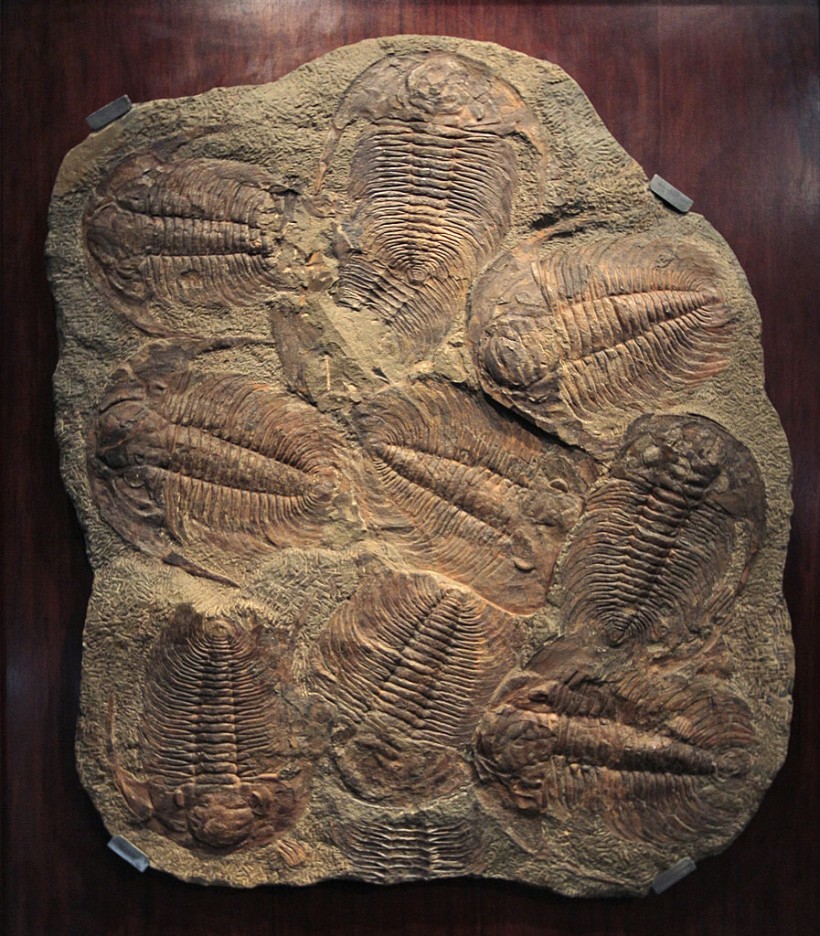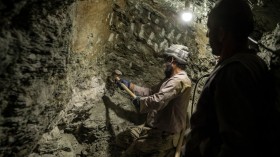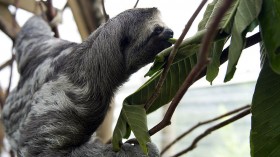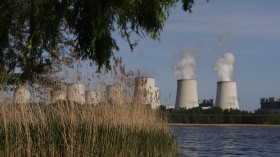Trilobites are among the most iconic and diverse fossils of the Paleozoic era, but their feeding habits and ecology remain largely unknown.
A new study published in Nature reveals the last bite of a 465-million-year-old trilobite, preserved in its gut, that sheds light on its diet and lifestyle.
A Unique Fossil with Preserved Gut Contents
 (Photo : JACQUES DEMARTHON/AFP via Getty Images)
(Photo : JACQUES DEMARTHON/AFP via Getty Images)

The fossilized trilobite belongs to the species Bohemolichas incola, which lived in the Middle Ordovician period in what is now the Czech Republic.
It was discovered by a private collector, Karel Holub, in 1908 and has been housed in the Museum of B. Horák in Rokycany ever since.
The fossil is remarkable for being three-dimensionally preserved in a spherical concretion, known as a Rokycany ball, that formed around it shortly after its death.
The concretion protected the trilobite from erosion and deformation, allowing the researchers to examine its internal anatomy using advanced imaging techniques.
The researchers used synchrotron microtomography, a powerful X-ray-based method that can produce high-resolution images of the internal structures of fossils without damaging them.
They scanned the trilobite at the European Synchrotron (ESRF) in Grenoble, France, and reconstructed its three-dimensional model using software.
The images revealed that the trilobite had a tightly packed gut full of fragmented shells of various marine organisms, such as ostracods, hyoliths, bivalves, and stylophoran echinoderms.
These shells were likely the remains of the last meal consumed by the trilobite before it was buried by an underwater mudflow.
Also Read: New Trilobites Fossil Revealed a Resemblance to Modern Crustaceans
An Opportunistic Scavenger with a High-pH Gut
The gut contents of the trilobite provided valuable information about its feeding mode and preferences.
The researchers concluded that Bohemolichas was an opportunistic scavenger that fed on both dead and live animals. It preferred prey that either easily broke apart or were small enough to be swallowed whole.
The researchers also inferred that Bohemolichas had a high-pH gut environment, similar to modern crustaceans and xiphosurans (horseshoe crabs).
This is because the shells in its gut were not dissolved by stomach acids, but rather by enzymes that work best at alkaline conditions.
A high-pH gut may have helped the trilobite digest hard materials and prevent infections by pathogens.
Interestingly, the fossil also shows traces of other scavengers that burrowed into the trilobite's carcass after its death.
They targeted the soft tissue but avoided the gut, implying that it was toxic or unpleasant for them. This suggested that the trilobite's digestive system remained active even after its death and may have produced noxious substances.
A New Insight into Trilobite Ecology
The study of Bohemolichas is the first to describe a trilobite with preserved gut contents and to analyze them in detail.
It fills a fundamental gap in our understanding of trilobite ecology and their role in Paleozoic ecosystems.
The researchers hope that their findings will inspire further investigations of other trilobite fossils with potential gut contents, using synchrotron tomography or other non-destructive methods.
Such studies may reveal more about the diversity and evolution of trilobite feeding strategies and their interactions with other marine organisms.
Related article: Trilobites Possessed Clasper-like Limbs for Mating, According To Fossil Discoveries
© 2024 NatureWorldNews.com All rights reserved. Do not reproduce without permission.





